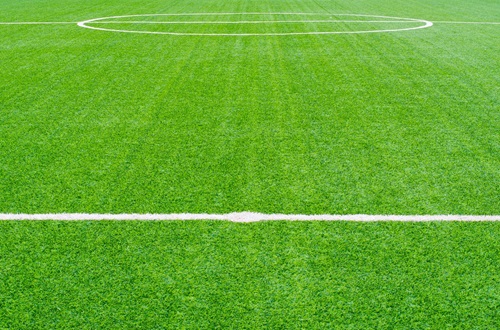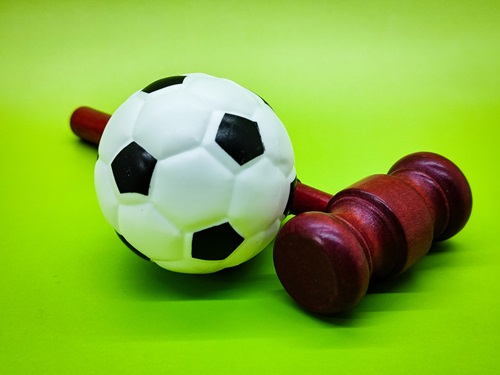
Photo © Keith Lamond | Dreamstime.com
Enhancing youth sports facilities and increasing access to them are the dual focus of two (fairly) new pieces of federal legislation.
On April 11, U.S. Rep. Bill Huizenga (R-Mich.) and U.S. Rep. Marc Veasey (D-Texas) introduced the “Youth Sports Facilities Act,” created to help build and improve youth sports facilities across the country, increase sports tourism and strengthen small businesses. A companion bill of the same name was introduced in the U.S. Senate a day earlier by Senators Jon Ossoff (D-Ga.) and Todd Young (R-Ind.).
In both cases, the bipartisan legislation would make youth sports facilities eligible for grants through the U.S. Department of Commerce’s Economic Development Administration (EDA), giving educational agencies, local governments and nonprofits more funding opportunities to create and upgrade sports facilities while growing local economies at the same time. The bills also would give preference to rural communities and projects that aim to create new sports facilities in low-income and underserved communities.
If all this sounds familiar, that’s because similar legislation was introduced last fall.
“The [new] bill has the same aim,” a health policy advisor in Veasey’s office told SDM. “There were just changes made to account for the passage of the EDA reauthorization at the end of last year.”
“Youth sports play a vital role in promoting healthy lifestyles from an early age while teaching essential life skills like teamwork and discipline,” Young said in a statement. “This bill would empower communities to use existing grant resources to improve youth sports facilities for children living in areas of need, encouraging greater youth sports participation across the nation.”

“For too long, an area code has determined whether students could have access to facilities or resources necessary to participate and compete,” Huizenga added.
The legislation is endorsed by the YMCA of the USA, the Sports & Fitness Industry Association, the National Federation of State High School Associations, the National Recreation and Parks Association, U.S. Soccer, Pop Warner Little Scholars and more, as well as multiple regional and local stakeholders such as the West Michigan Sports Commission.
“The [commission] was founded in 2007 as an economic generator to spur visitor spending for the region,” said Mike Guswiler, the commission’s president. “One of its key tenets is generating overnight stays from event visitors, which drives spending in area hotels, restaurants and support of other businesses, sustaining and creating jobs. However, sports tourism and investment in sport facilities goes beyond these metrics. Investment in sport infrastructure provides a launching pad for health and wellness, vibrancy, and community activity and access to sport.”
“With the United States set to host a historic decade of global sporting events, we must prioritize youth participation in sports and fitness and ensure all children have the opportunity to play, grow and thrive,” added Todd Smith, SFIA president and CEO, calling the reintroduction of the legislation “a crucial investment in our communities — one that leverages existing federal resources, without increasing spending, to help cultivate the next generation of healthy, active, socially connected youth.”
Efforts to open and promote new sports facilities are taking place at local levels, too. In Chicago, for example, the nonprofit youth programming organization Urban Warriors opened a first-of-its-kind facility in the city’s Little Village neighborhood in February. The 3,000-square-foot, two-story youth sports community center boasts a synthetic turf field, batting cages, a weight room and a yoga studio.
“I am so excited,” Urban Warriors founder Rey Raigoza told Block Club Chicago, a local nonprofit news organization. “Spaces like this, we have to drive typically 45 minutes to see something like it. And now we have it here, in the heart of our community.”

Urban Warriors offers free year-round baseball, soccer, yoga, chess and podcasting programming, and the new facility also includes a classroom for academic mentoring and a studio for the organization’s youth podcast, La Carnita Asada.
“We use the vehicle of baseball, soccer, all this stuff to really accomplish what our mission is, which is to build the next generation of leaders,” Raigoza told Block Club Chicago.
“Families can enter this building and know that their children can learn and compete in a safe environment, and we need to invest in more of these types of facilities,” added Michael Rodriguez, a Chicago alderman who spoke at the facility’s ribbon-cutting ceremony.
Meanwhile, the King County Council in Washington last fall approved $5 million in parks funding to build a new synthetic turf baseball infield in Seattle’s Central District, make improvements at two aquatic centers, provide new sports opportunities for girls in grades seven through 12, and much more.
The package of 63 projects includes money from youth and amateur sports grants, as well as the county’s Healthy Communities and Parks Fund and a voter-approved parks levy.
“Investing in our parks and recreational infrastructure is investing in our future,” King County Councilmember Rod Dembowski, who sponsored the legislation, said at the time. “These grants will help bridge the gap in access to quality outdoor spaces and activities, fostering a sense of community and belonging among our youth.”

